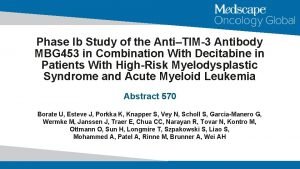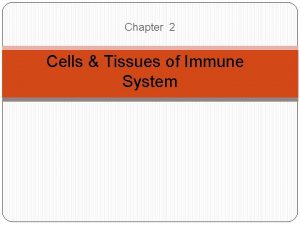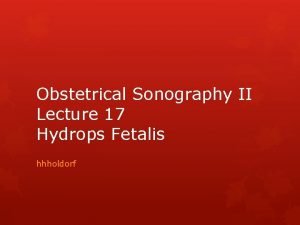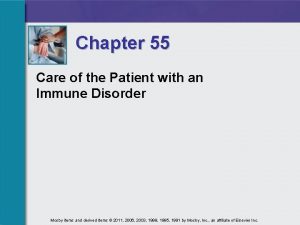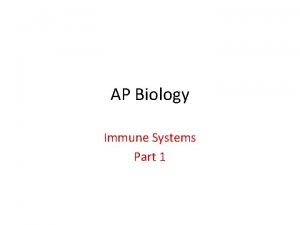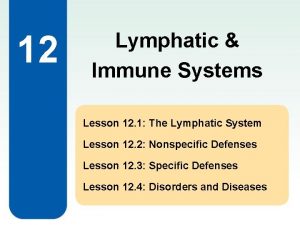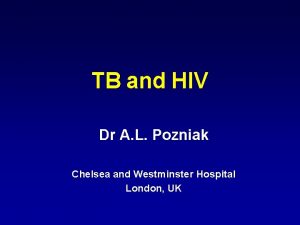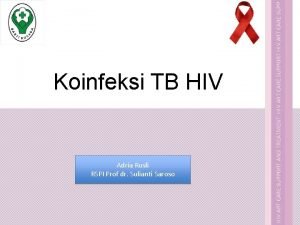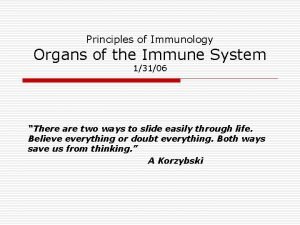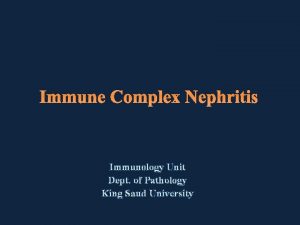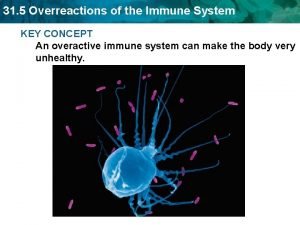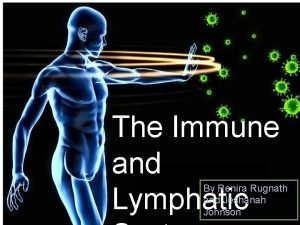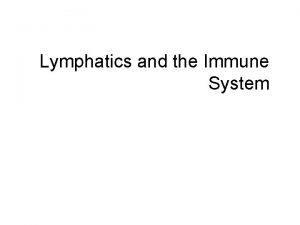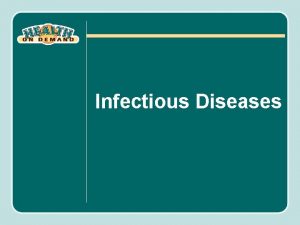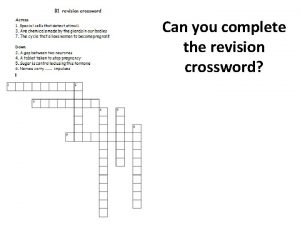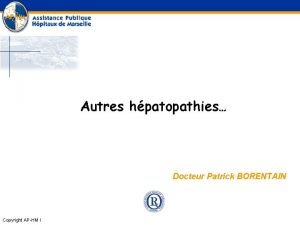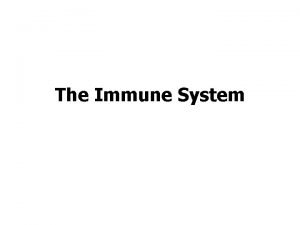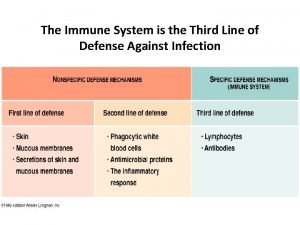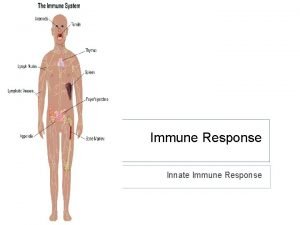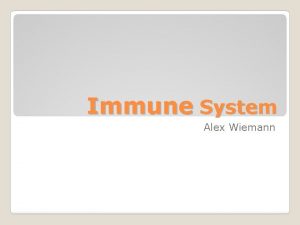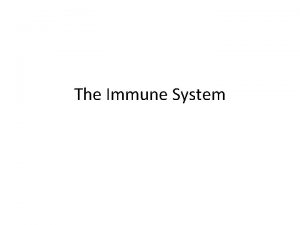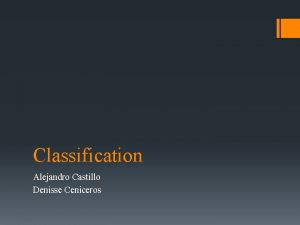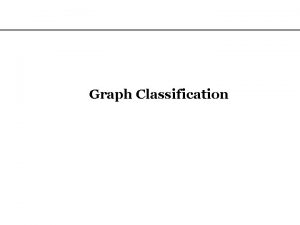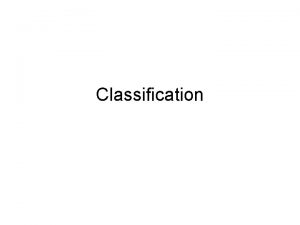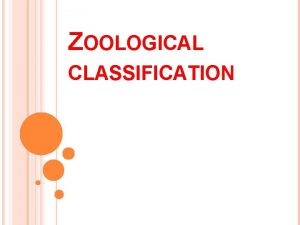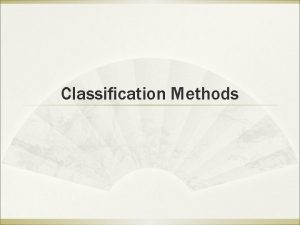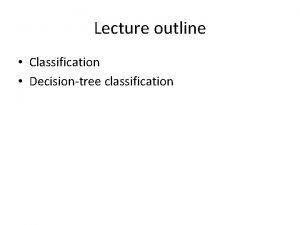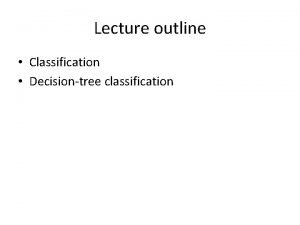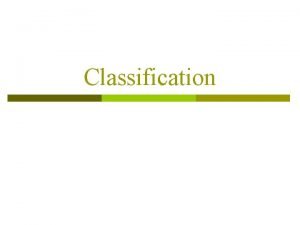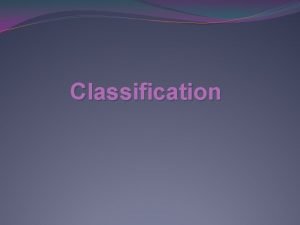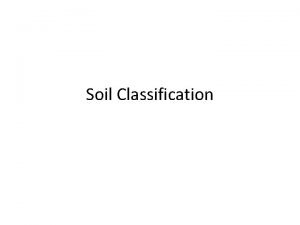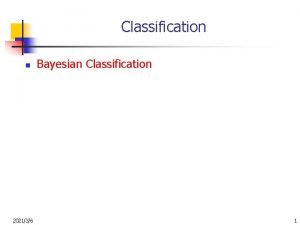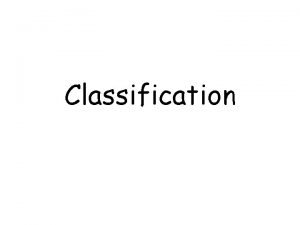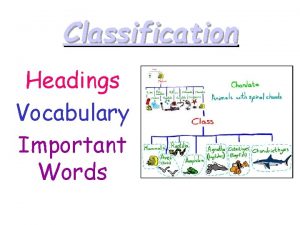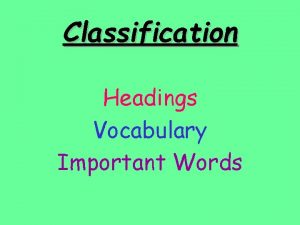Immune cells Immune cells Classification of immune cells














































- Slides: 46

Immune cells

Immune cells

Classification of immune cells p. Cells of the innate immune system monocyte/macrophage neutrophil eosinophil basophil dendritic cell (DC) natural killer cell (NK cell) p. Cells of the adaptive immune system B lymphocyte T lymphocyte

Cells mediating innate immunity monocyte/macrophage neutrophil eosinophil basophil dendritic cell (DC) natural killer cell (NK cell)

I. monocyte/macrophage Origin and development of macrophages

monocyte macrophage l. Enlarged cell size (5~10 -fold) l. Increased organelles l. Enhanced phagocytic ability

Macrophages in different tissues have various names

Functions of macrophage 1. Ingestion and digestion of pathogens

How do Macrophages Recognize Pathogens?

Pattern Recognition Receptors (PRRs) PRRs recognizes conserved molecular structures on microorganisms These molecular structures are not expressed by host tissues Mannose receptor PRRs Scavenger receptor Toll-like receptor (TLR)

Mannose receptor

Scavenger receptor recognize u teichoic acid (gram-negative bacteria) u lipopolysaccharide (LPS, gram-positive bacteria) u phosphatidyl serine (apoptotic host cells)



Scavenger receptor Phagocytosis of apoptotic cells

Toll-like receptor (TLR) l Thirteen receptors identified in mice and humans

Opsonic receptor 1) Ig. G Fc receptor (FcγR) 2) complement receptor (CR 1)

Mechanisms of killing phagocytosed pathogens 1) Oxygen-dependent killing mechanisms 2) Oxygen-independent killing mechanisms

1) Oxygen-dependent killing mechanisms During phagocytosis, the respiratory burst occurs A. reactive oxygen intermediates(ROIs) NADH/NADPH oxidase O 2— (superoxide anion) . OH (hydroxyl radicals) H 2 O 2 (hydrogen peroxide) B. reactive nitrogen intermediates(RNIs) i. NOS (induced nitric oxide synthetase) L-arginine + O 2 + NADPH NO (nitric oxide) + L-citrulline + NADP NO reacts with O 2— forming peroxynitrite

2) Oxygen-independent killing mechanisms Lysozyme Defensins: a group of cationic peptides hydrolytic enzymes

Functions of macrophage 2. Antigen processing and presentation

Functions of macrophage 3. Secretion of factors

Granulocytes Neutrophil Eosinophil Basophil

II. Neutrophil p. Constitute 50%– 70% of the circulating WBC p. A life span of only 2 -3 days p. Rapid responders to pathogen invasion sensitive to chemoattractants the first to arrive at a site of inflammation

The process of neutrophil extravasation The steps in transendothelial migration and how it is directed are still largely unknown

II. Neutrophil p. Potent phagocytic activity ØPrimary granules: a type of lysosome contain peroxidase, lysozyme, and hydrolytic enzymes ØSecondary granules: contain collagenase, lactoferrin, and lysozyme p. Exhibit a larger respiratory burst than macrophages ØProduce more ROIs and RNIs ØNeutrophils are more likely than macrophages to kill ingested pathogens

III. Eosinophil p. Constitute 1%– 3% of the circulating WBC p. Contents of eosinophilic granules may damage the parasite membrane p. Help against parasites

IV. Basophil p< 1% of the circulating WBC p. Nonphagocytic granulocytes p. Pharmacologically active substances Øhistamine, leukotriene etc. p. Involved in allergic responses

V. Mast cell p. In mucosae and connective tissues p. Not in circulation p. Functionally indistinguishable from basophil

VI. Dendritic cell (DC) pcovered with long membrane extensions puptake, processing and presentation of antigens pexpress high levels of class II MHC molecules and costimulatory molecules

Interaction of DC and T cell

VII. Natural killer (NK) cell p Large, granular lymphocytes with cytotoxic activity p No specific antigen receptor CD 16 (Ig. G Fc receptor) and CD 56: typical NK cell markers p No thymic development Nude Mice Ølack a thymus Øno T cells Øhave functional NK-cell populations

VII. Natural killer (NK) cell p. The first line of defense against Ø virus infected cells Ø tumor cells p Cytolytic mechanisms of NK cell Ø Fas. L-Fas pathway Ø perforin/granzyme pathway Ø antibody-dependent cell-mediated cytotoxicity (ADCC)

The Fas. L-Fas pathway

The perforin/granzyme pathway l The most common mechanism

The perforin/granzyme pathway

Antibody-dependent cellmediated cytotoxicity (ADCC)

The mechanism by which NK cells recognize target cells l NK cells express two different categories of receptors Activation receptors The cytoplasmic tails contain the immunoreceptor tyrosine-based activation motif (ITAM) deliver activation signals Inhibition receptors The cytoplasmic tails contain the immunoreceptor tyrosine-based inhibition motif (ITIM) deliver inhibition signals

Activation receptors (ARs) l The exact nature of ARs on NK cells is not completely clear l Some of the candidate activation receptors l The ligands : are not known May be abnormal patterns of glycosylation on the surface of target cells

Inhibitory receptors l Killer immunoglobulin-like receptor (KIR) KIR 2 DL, KIR 3 DL l Killer lectin-like receptor CD 94/NKG 2 A l Ligand: MHC class I molecules

Opposing Signal Model of Cytotoxicity By NK Cells

VIII. NK T cell l Some of the characteristics of both T cells and NK cells Express T cell receptors (TCRs) Recognition of CD 1 -presented antigens Express NK-specific markers Kill tumor and virus-infected cells

What to remember l Cell function monocyte/macrophage neutrophil eosinophil basophil/mast cell dendritic cell NKT cell

Study question l What are functions of macrophages? 1. Ingestion and digestion of pathogens 2. Antigen processing and presentation 3. Secretion of factors

Study question l a. b. c. Explain why each of the following statements is false. Activation of macrophages increases their expression of class I MHC molecules, making the cells present antigen more effectively. All lymphoid cells have antigen-specific receptors on their membrane. Follicular dendritic cells can process and present antigen to T lymphocytes.

Study question l l l (Eosinophil) is phagocytic cell important in the body’s defense against parasitic organisms (Neutrophil) is generally first cell to arrive at site of inflammation (Basophil) is nonphagocytic granulocytic cell that release various pharmacologically active substances (Basophil) is white blood cell that migrate into the tissues and play an important role in the development of allergies (B cell) is an antigen-presenting cell that arises from the same precursor as a T cell but not the same as a macrophage
 Primary immune response and secondary immune response
Primary immune response and secondary immune response Immunity assignment slideshare
Immunity assignment slideshare Mbg453
Mbg453 Immune effector cells
Immune effector cells Waters view with open mouth
Waters view with open mouth Alpha intercalated cells
Alpha intercalated cells Thyroid gland
Thyroid gland How are mitosis and meiosis similar
How are mitosis and meiosis similar Somatic cells vs germ cells
Somatic cells vs germ cells Chlorocruorin
Chlorocruorin Prokaryotic v. eukaryotic cells
Prokaryotic v. eukaryotic cells Venn diagram for animal and plant cells
Venn diagram for animal and plant cells Prokaryotic cells vs eukaryotic cells
Prokaryotic cells vs eukaryotic cells Organelle trail
Organelle trail Masses of cells form and steal nutrients from healthy cells
Masses of cells form and steal nutrients from healthy cells Pseudostratified vs simple columnar
Pseudostratified vs simple columnar What animals have prokaryotic cells
What animals have prokaryotic cells Is a staphylococcus cell prokaryotic or eukaryotic
Is a staphylococcus cell prokaryotic or eukaryotic Chapter 8 cellular reproduction cells from cells
Chapter 8 cellular reproduction cells from cells Cells cells they're made of organelles meme
Cells cells they're made of organelles meme What is the third line of defense in the immune system
What is the third line of defense in the immune system Immune system flow chart
Immune system flow chart Third line of defense immune system
Third line of defense immune system Spalding sign
Spalding sign Primary vs secondary immune response
Primary vs secondary immune response Innate immunity first line of defense
Innate immunity first line of defense Chapter 35 immune system and disease
Chapter 35 immune system and disease Chapter 55 care of the patient with an immune disorder
Chapter 55 care of the patient with an immune disorder Primary vs secondary immune response
Primary vs secondary immune response Ap biology immune system
Ap biology immune system Chapter 24 the immune and lymphatic systems and cancer
Chapter 24 the immune and lymphatic systems and cancer Lesson 12.1 lymphatic ducts and vessels
Lesson 12.1 lymphatic ducts and vessels Lesson 12 blood and immune system
Lesson 12 blood and immune system Immune checkpoint inhibitors mechanism of action
Immune checkpoint inhibitors mechanism of action Immune reconstitution inflammatory syndrome
Immune reconstitution inflammatory syndrome Immune reconstitution inflammatory syndrome
Immune reconstitution inflammatory syndrome Immune system lymph nodes
Immune system lymph nodes Immune complex glomerulonephritis
Immune complex glomerulonephritis Overreactions of the immune system
Overreactions of the immune system Lymphatic vs immune system
Lymphatic vs immune system Lymph return
Lymph return Defination of immune system
Defination of immune system Primary immune response
Primary immune response Immune response controller crossword
Immune response controller crossword Hepatite auto immune fmc
Hepatite auto immune fmc Antigen defintion
Antigen defintion Phagocytic cells
Phagocytic cells


